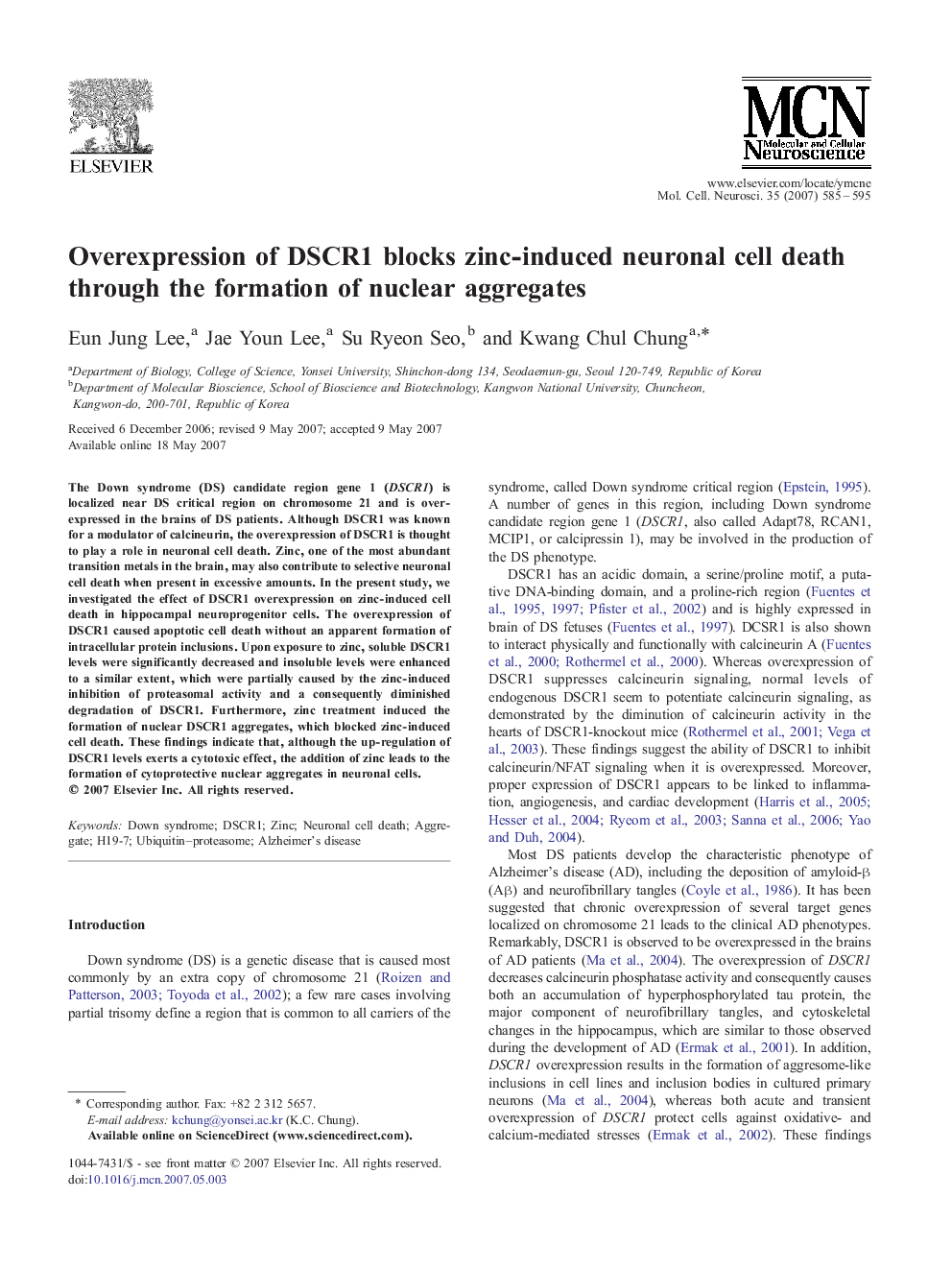| Article ID | Journal | Published Year | Pages | File Type |
|---|---|---|---|---|
| 10956744 | Molecular and Cellular Neuroscience | 2007 | 11 Pages |
Abstract
The Down syndrome (DS) candidate region gene 1 (DSCR1) is localized near DS critical region on chromosome 21 and is overexpressed in the brains of DS patients. Although DSCR1 was known for a modulator of calcineurin, the overexpression of DSCR1 is thought to play a role in neuronal cell death. Zinc, one of the most abundant transition metals in the brain, may also contribute to selective neuronal cell death when present in excessive amounts. In the present study, we investigated the effect of DSCR1 overexpression on zinc-induced cell death in hippocampal neuroprogenitor cells. The overexpression of DSCR1 caused apoptotic cell death without an apparent formation of intracellular protein inclusions. Upon exposure to zinc, soluble DSCR1 levels were significantly decreased and insoluble levels were enhanced to a similar extent, which were partially caused by the zinc-induced inhibition of proteasomal activity and a consequently diminished degradation of DSCR1. Furthermore, zinc treatment induced the formation of nuclear DSCR1 aggregates, which blocked zinc-induced cell death. These findings indicate that, although the up-regulation of DSCR1 levels exerts a cytotoxic effect, the addition of zinc leads to the formation of cytoprotective nuclear aggregates in neuronal cells.
Related Topics
Life Sciences
Biochemistry, Genetics and Molecular Biology
Cell Biology
Authors
Eun Jung Lee, Jae Youn Lee, Su Ryeon Seo, Kwang Chul Chung,
